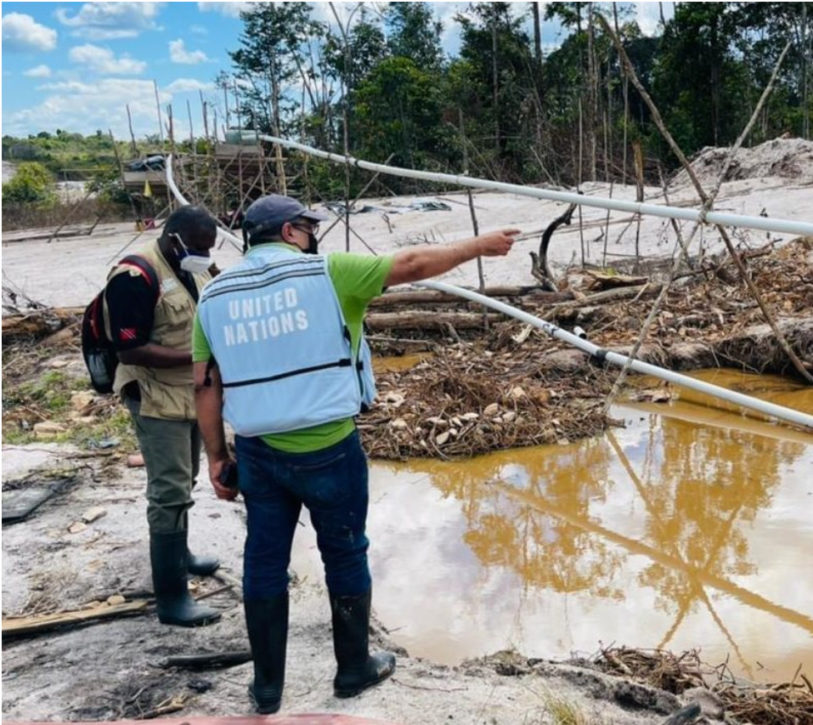Executive Summary
A tropical wave embedded within the Intertropical Convergence Zone (ITCZ) affected Guyana causing heavy rains from May to June 2021, and thus affecting all country regions, the most affected being 10, 7, 6, 5, and 2. As of 28 June, 51,582 households were affected countrywide over a total population of 746,955. On June 10, the President officially declared the floods a level 2 national disaster, thus requiring specific support. Thousands of farms have been affected and there are consequences on livelihoods and destroyed infrastructure. The most affected sectors are agriculture and mining, which impacts on food security of vulnerable population. In Region 7 there is the presence of mining extraction activities which are of high importance for the national economy.
Impacts of the floods on the agricultural and mining sectors were the main environmental concerns upon arrival of the mission.
To support the government-led response and requested assistance from the Caribbean Disaster Emergency Management Agency (CDEMA) to floods, United Nations Disaster Assessment and Coordination (UNDAC) members were deployed on site for a period of two weeks, from 21 June to 3 July. The three experts joined a CDEMA-led Detailed Damage Assessment supporting on coordination assessment and mining sector assessment.
The main objective of the overall mission was to provide technical advice to national and local authorities to assess the structure, operations, internal configuration and core functional areas of the Emergency Coordination Centres in two regions, including the existing tools and plans, internal coordination and flow of information, and make recommendations through the UN Resident Coordinator (RC); to assess the effectiveness and timeliness of the Emergency Coordination Centres performance in two regions during the floods ongoing since May 2021, including the alert system, the coordination with stakeholders, and the emergency and response monitoring aimed to provide timely and relevant information for the decision-making process of the authorities and make recommendations through the UN RC; to lead the Detailed Damage Sector Assessment for the mining sector in the worst affected region of Guyana by proposing a suitable methodology, conducting fieldwork to gather data, and delivering findings and recommendations through the UN RC; to advice the UN Country Team (CT)/UNETT on humanitarian monitoring and response to face evolving disaster risks during the rainy season.
The mission outcomes showed that the emergency was more in a recovery phase and should therefore be handed over accordingly, with a long-term recovery strategy prepared by the UNCT. No humanitarian situation nor major negative environmental impact resulting from the floods were found, however the development and reinforcement of emergency response guidelines, human resources, contingency funds, as well as transportation capacity would be beneficial to address future disasters. In addition, particular attention should be paid to include the environmental impact of the flood within the crises coordination structure. Regarding the mining sector, in the small mines assessed, the major negative impact is the loss of income due to a halt in production and the floods have exposed the many wrong practices associated with the mining industry and its small size operations. Drinking water surveillance is needed to monitor the level of various substances. Finally, the introduction of alternative methods for mining without mercury, such as, for instance, the use of gravity concentration methods, is recommended.
